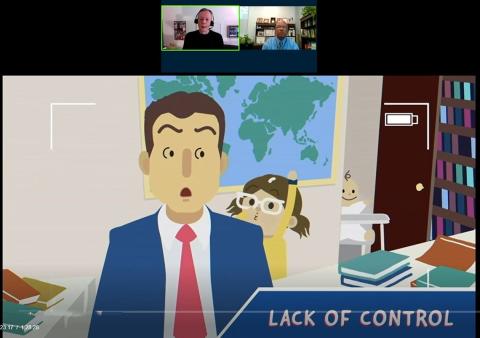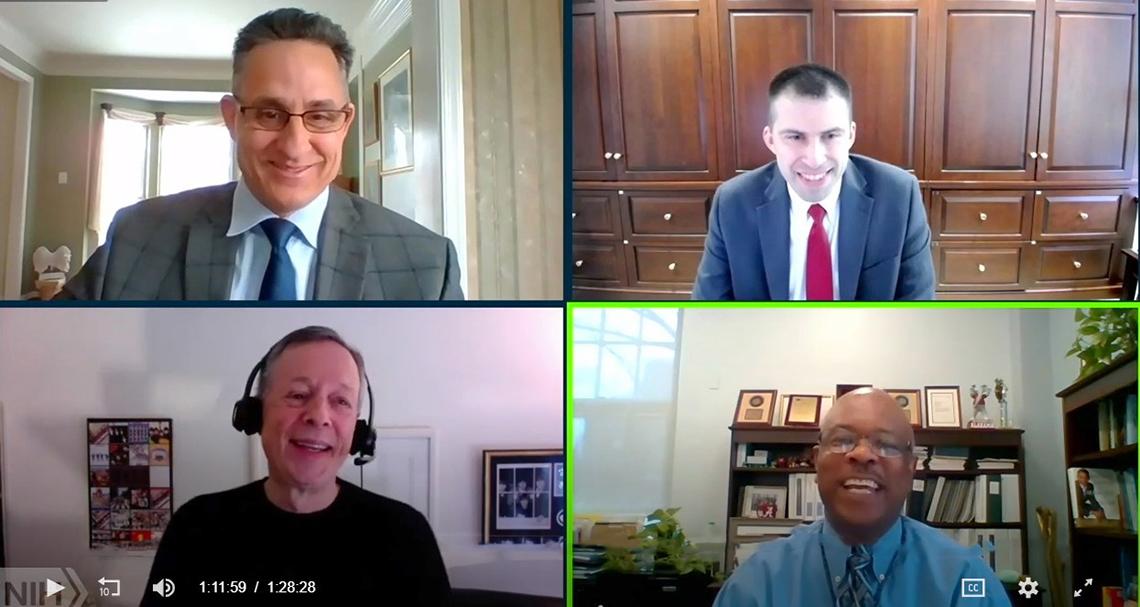The Virtual Disconnect
Morgan Divulges How to Communicate Better Online

Ever receive a work email with only the words “nice job” and wondered if the sentiment was sincere or sarcastic? Ever ask a question on a Zoom meeting only to become flustered at the deafening silence?
These are common concerns in the virtual world, where our intentions and reactions are easily and frequently misunderstood, explained Nick Morgan, a communication coach, commentator and author of numerous books, most recently the 2018 bestseller, Can You Hear Me Now?
When we send and receive emails or texts, “we believe we are understood, and understand correctly, 90 percent of the time when, in fact, our success rate is maybe 50 percent,” he said. This disconnect is also a recurring headache with video meetings, our customary form of communication during the Covid pandemic.
“If we’re going to get through this pandemic, and this difficult period of social isolation, then we need to spend more time and take more care in understanding each other’s intentions,” said Morgan, speaking at a recent virtual Deputy Director for Management Seminar Series lecture.
What Do You Mean?
Morgan’s lifelong interest in communication began as a teenager, when his sled collided with a tree, fracturing his skull. When he awoke from the coma, he had to relearn cognitive and communication skills, including how to read body language.

Over the years, Morgan has come to realize that real-world communication isn’t easily replicated online. In person, we use social cues to sense the other person’s intent and adjust our reactions. On video meetings, many subtleties get lost and it’s harder to read body language—the nods, shrugs, knitted brows, glazed-over eyes. Lacking that feedback, all-virtual relationships tend to steadily erode, he said.
“Over time,” said Morgan, “the many little misunderstandings that come about, because of the complicated nature of the communication, gradually add up to a degradation of trust and camaraderie.”
Meanwhile, on video meetings, we’re all in 2-dimensional little boxes, so proprioception—how we perceive our spatial relation to others—is askew, and it’s fatiguing.
“By the end of the day, we’ve been in low-stress mode for a number of hours because our proprioception is going haywire trying to figure out where everybody is,” he said.
And it’s not just what we see. The audio we hear over the phone and the computer is compressed, so we’re missing the inflections and emotion gets muted. Also, without the face-to-face audio-visual cues, we’re unsure when the other person is winding up their remarks and tend to interrupt each other more.
And, there are other elements conspiring against us, virtually.
Assuming the Worst
Our lack of feedback in the virtual world sets off a series of other communication pitfalls. Each time there’s a lag on video, during that awkward pause when we can’t quite read others’ reactions, we subconsciously assume the worst. That frustration and the ensuing misunderstandings, said Morgan, often devolve into a lack of empathy.

What’s more, there’s a virtual lack of control. We cringe at those awkward Zoom meeting moments when kids come barreling into the room, the dog incessantly barks or your spouse’s sneezes drown out your comment. “The virtual world demands consistency,” said Morgan, “but we humans are an inconsistent species.”
And beware of another pitfall with serious consequences: virtually, the lack of emotion can impair decision-making.
“We connect hierarchies of emotion to things that tell us how important something is or isn’t,” said Morgan. “Pain is at the top; joy comes a little below that. As a result, in the virtual world, where emotions are muted, we find it harder to make good decisions.”
All of this, he said, leads to a lack of connection and diminished trust.
Making Intent Clear
Luckily, there are actions we all can take to communicate better and forge stronger bonds online. Morgan recommends creating virtual safe spaces to emulate that watercooler connection at the office. For some, Zoom work socials are that outlet. But, he said, many people have grown weary of them because “[socials] have an informal nature and video-conferencing demands a formal scheduling.”
Instead, he advises creating safe spaces within the meeting itself—chitchats at intervals to ask about the kids or hobbies—and preferably not at the meeting outset, when everyone is looking for their mute button while trying to connect.

Another tip: “Assign an emcee who will make sure everyone participates,” said Morgan. “People will pay attention better and participate more.” Plus it may cut down on the interrupting. The emcee, he added, should pause every 10 minutes or so—the average online attention span—to ask for input or just to mix it up.
Also, it’s a good idea to track staff morale, but you won’t find out by asking directly, said Morgan. Take the team’s temperature over time. Try a simple number scale, a red/yellow/green light check from bad to great or some other quick poll.
And, because the worst format for getting intent across is email—hear Morgan out on this one—use emojis. With a smiley face, that “nice job” message can’t be misconstrued.
“As a very crude substitute for simple body language, emojis will do the trick in the short run,” said Morgan. “So suck it up, swallow your dignity and start to use [them].”
Another email tip: make the subject heading a sentence or detailed phrase. “Quick question” will only elicit recipient groans. If you’re specific, and include an action item, that clarity will improve response time and efficiency.
When we return to normal, we’ll still contend with some virtual pitfalls. For now, we keep trying to adapt to our all-virtual environment.
So, try to make your intent clear and be understanding. “In the pandemic, we’ve all discovered there’s nothing wrong with being human,” said Morgan. “In fact, you might as well embrace it, because we’re all in this together.”
